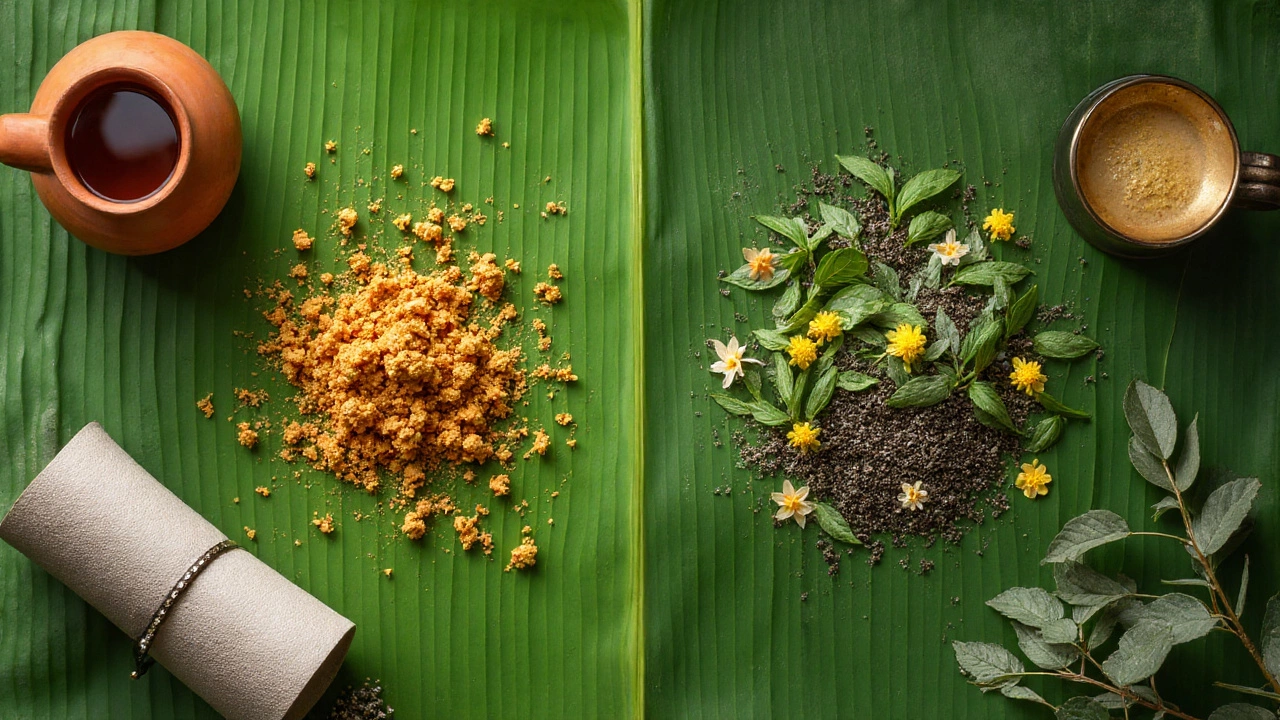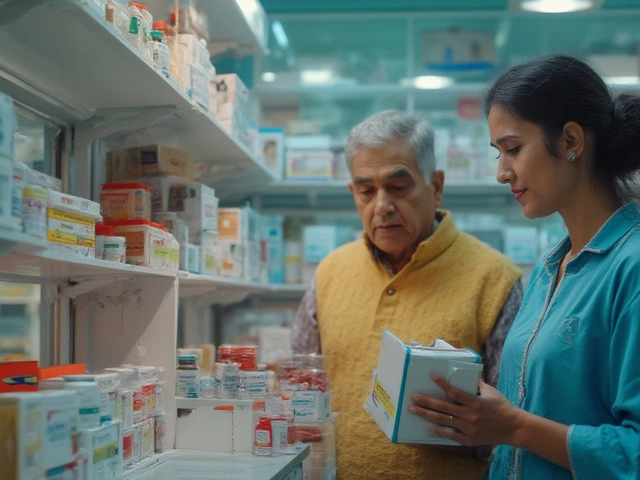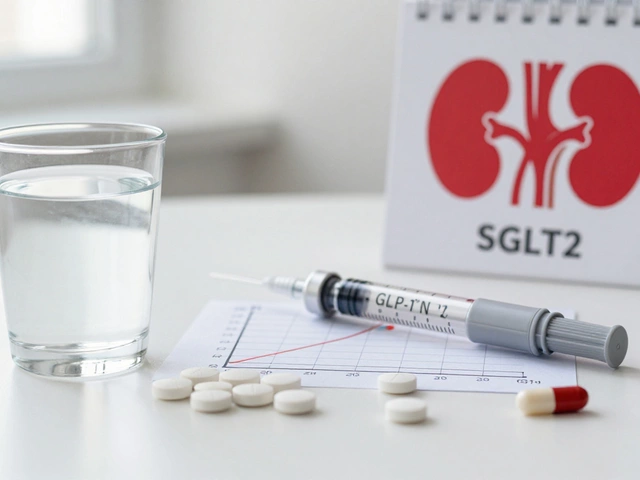If a “natural” capsule made your heart race and your mind spin, you’re not imagining it. Some common herbs are stimulating, some mess with serotonin or dopamine, and a few ramp up your stress hormones. That combo can tip you into anxious, jittery, or panicky territory-especially if you’re on other meds, you’re sensitive to caffeine, or you took a heavy dose. This guide keeps it simple: which herbs are most likely to trigger anxiety, why it happens, how to lower your risk, and what to use instead when you want calm without the chaos.
TL;DR
- High-risk anxiety triggers: yohimbe (yohimbine), bitter orange (synephrine), ephedra/ephedrine (banned in many places), caffeine-containing herbs (guarana, yerba mate, green tea extract), and mucuna pruriens (L-DOPA).
- Medium risk: Panax ginseng (especially red ginseng), Siberian ginseng/eleuthero, rhodiola, St John’s wort, high-iodine seaweeds (kelp, bladderwrack), licorice root.
- Why they spike anxiety: they stimulate the sympathetic nervous system, raise serotonin/ dopamine, interfere with cortisol/thyroid, or stack with your meds.
- Quick safety rules: avoid stimulant stacks (synephrine + caffeine + yohimbine), check hidden caffeine, start low, trial one ingredient at a time, and watch for interactions (SSRIs/SNRIs/MAOIs, thyroid or blood pressure meds).
- UK angle: ephedra is banned; yohimbe is not authorised; synephrine products are under scrutiny; follow MHRA and FSA guidance. If in doubt, ask your GP or pharmacist.
Herbs that can trigger or worsen anxiety
I’m not anti-herb. I’m pro “no nasty surprises.” Here are the usual suspects that push people from calm to keyed-up. I’ve grouped them by how often they cause trouble and the kind of symptoms they spark.
- Yohimbe (Pausinystalia johimbe; yohimbine): Potent alpha-2 adrenergic antagonist. Translation: it lifts the brakes on adrenaline. Common effects include jitteriness, anxiety, palpitations, and elevated blood pressure. Case reports and poison-centre data have linked yohimbe supplements to panic-like episodes and ER visits. In the UK/EU, yohimbe is not authorised for foods/supplements; it’s flagged by safety bodies (check MHRA/NHS advice).
- Ephedra/Ma huang (ephedrine alkaloids): A classic stimulant, once common in weight-loss pills. It can cause anxiety, insomnia, rapid heartbeat, and high blood pressure. It’s banned in dietary supplements in the US and not permitted in UK/EU foods. If you see “ephedra extract” or “ephedra sinica,” walk away.
- Bitter orange (Citrus aurantium; synephrine): Sold for fat burning. Synephrine hits adrenergic receptors, especially when stacked with caffeine. Expect a higher chance of nervousness, racing heart, and anxious restlessness. UK authorities have warned on stimulant blends with synephrine.
- Caffeine-containing botanicals: Guarana, yerba mate, green tea extract, kola nut, and coffeeberry all deliver caffeine-sometimes more than coffee per capsule. The EFSA’s 2015 opinion pegs up to 200 mg caffeine as a single dose generally tolerable for most adults, but sensitive people feel anxious at much lower doses. “Natural caffeine” is still caffeine.
- Mucuna pruriens (velvet bean; L-DOPA): Supplies L-DOPA, a direct dopamine precursor. That can sharpen focus, but in some it triggers agitation, anxiety, or insomnia. It also interacts with Parkinson’s meds and some antidepressants.
Now the “it depends” group-often helpful for energy or mood at the right dose, but more likely to backfire if you’re sensitive or stacking them.
- Panax ginseng (Korean/Asian ginseng): Reports of nervousness, insomnia, and irritability pop up, especially with red ginseng or higher doses. It may interact with antidepressants and antidiabetics. A few case reports describe mood elevation or agitation in vulnerable people.
- Eleuthero (Siberian ginseng): Not a true ginseng, but an adaptogen. It can feel “pushy”-lightly stimulating-and can worsen sleep and anxiety if you overshoot.
- Rhodiola rosea: Many people use it for fatigue and stress, but a minority feel wired or edgy, especially with 3% rosavins/1% salidroside extracts at higher doses or taken late in the day. Randomised trials note occasional irritability and insomnia as side effects.
- St John’s wort (Hypericum perforatum): It can help mild-to-moderate depression in some, but it also raises serotonin and nudges noradrenaline/dopamine. Side effects can include restlessness, anxiety, and insomnia-plus serious interactions (SSRIs, SNRIs, MAOIs, triptans, warfarin, oral contraceptives). UK NHS and MHRA caution on interactions.
- Licorice root (Glycyrrhiza glabra): By inhibiting 11β-HSD2, it raises active cortisol levels. Think fluid retention, higher blood pressure, palpitations-and an “amped” feeling that some read as anxiety. The FSA advises moderation; chronic use can be risky.
- High-iodine seaweeds (kelp, bladderwrack): Big iodine hits can swing thyroid function, leaning hyperthyroid in susceptible folks-hello tremor, palpitations, heat intolerance, and anxiety. British Thyroid Association guidance urges caution with high-iodine supplements.
- Ginkgo biloba: Usually neutral on anxiety, but a small number report restlessness. Real worries with ginkgo are bleeding risk and drug interactions.
Less common-but worth flagging if you’re experimenting:
- Capsaicin (chilli extracts) in “thermogenic” blends can raise heart rate and trigger a nervous, sweaty, speedy feeling.
- Schisandra and gotu kola are generally gentle, but very sensitive people sometimes report agitation on higher doses or when stacking with stimulants.
Herbs that are usually calming but can rarely backfire include valerian (paradoxical stimulation in a small minority), passionflower, and lemon balm if taken in odd timing or combined with caffeine. If you tried something calming and felt the opposite, don’t force it-your biology is telling you something.
Why these herbs spark anxiety: the mechanisms and the risk multipliers
Understanding the “why” helps you avoid landmines. Here are the big pathways that flip calm into chaos.
- Adrenaline push (adrenergic stimulation): Yohimbine, ephedrine, and synephrine all press on the body’s gas pedal. They increase norepinephrine, raising heart rate, blood pressure, and “threat” signalling. Anxiety often follows.
- Caffeine load: Caffeine blocks adenosine’s calming effects. It raises dopamine and norepinephrine and lowers the threshold for stress. If you’re sensitive, even 50-100 mg can feel like too much-especially empty stomach or dehydrated.
- Serotonin and dopamine shifts: St John’s wort raises serotonin (and can interact with SSRIs to push toward serotonin toxicity). Mucuna pruriens feeds dopamine directly, which can heighten goal drive but also restlessness and anxiety for some.
- Cortisol and mineral balance: Licorice prolongs cortisol’s action; that can create an edgy, wired feeling. It also lowers potassium and raises blood pressure-both can make palpitations more noticeable.
- Thyroid swings: High iodine intake from seaweeds can push thyroid hormones up in susceptible people. Hyperthyroid symptoms look a lot like anxiety.
Then there are the multipliers-things that turn a mild nudge into a problem:
- Stacks: Synephrine + caffeine + yohimbine is a classic pre-workout/weight-loss blend. Each adds to the other. If you’re feeling buzzy and you took a blend, assume a stack effect.
- Timing: Take a stimulating herb after 3 p.m. and you risk poor sleep, which then worsens anxiety the next day.
- Fasting/empty stomach: Faster absorption, sharper spikes.
- Genetics/sensitivity: Slow caffeine metabolisers (CYP1A2 variants) feel more anxiety at lower doses. You don’t need a gene test; your own history with coffee is a good clue.
- Medications: Antidepressants, ADHD meds, thyroid meds, decongestants, and triptans can interact. St John’s wort is a big one for interactions-NHS and MHRA flag it often.
- Health context: Panic disorder, PTSD, hyperthyroidism, arrhythmias, pregnancy, and uncontrolled hypertension all raise the stakes.
Credible sources if you want to dig deeper: EFSA’s caffeine safety opinion (2015); Office of Dietary Supplements fact sheets (NIH, updated 2023-2024) on ginseng and St John’s wort; NCCIH’s safety notes for yohimbe; UK MHRA and FSA guidance on herbal products; British Thyroid Association statements on iodine; NICE guidelines for anxiety disorders (2022) describing comorbid risks and prescribing cautions.

How to use herbs without making your anxiety worse
You don’t have to swear off botanicals. You just need a plan. Use these rules of thumb to lower your risk right away.
- Audit your ingredients: Scan labels for stimulant flags: yohimbe, yohimbine, ephedra/ephedrine, Citrus aurantium/synephrine, guarana, yerba mate, green tea extract, kola nut, coffeeberry, mucuna pruriens. If it’s a blend with “proprietary matrix,” be extra cautious.
- Count your caffeine: Add up all sources-coffee, tea, cola, energy drinks, and capsules. Sensitive to coffee? Treat guarana and green tea extracts as if they’re stronger than coffee.
- Trial single ingredients: If you want to see if rhodiola suits you, take rhodiola alone first-no blends. Start at half the usual dose for a week.
- Time it right: Keep any stimulating herb before 1 p.m. Sleep debt exaggerates anxiety more than any supplement can fix.
- Fuel and hydrate: A small snack with carbs and protein blunts spikes. Dehydration amplifies palpitations.
- Respect interactions: On SSRIs/SNRIs/MAOIs? Avoid St John’s wort and be careful with rhodiola and ginseng. On thyroid meds or have a thyroid condition? Skip high-iodine seaweeds. High blood pressure or arrhythmias? Avoid stimulants like synephrine, yohimbine, and ephedra. On anticoagulants? Be careful with ginkgo and St John’s wort.
- Know your locale: In the UK, ephedra is banned in supplements; yohimbe isn’t authorised; stimulant weight-loss blends are risky. Stick to products registered under the Traditional Herbal Registration (THR) scheme when possible-at least you get quality and leaflets with cautions.
- Stop early if you feel off: First sign of tremor, chest flutter, or a wave of dread? Pause the herb. Most stimulant effects fade within hours. Don’t “push through.”
Pro tip: log your dose, timing, and how you felt within 2-4 hours and again the next morning. Patterns jump out fast-especially with sleep quality and heart-rate changes on your smartwatch.
Safer options when you want calm, focus, or energy
Not all herbs rev you up. Here’s what usually plays nicer with anxious brains, plus how to choose the right niche tool for your job-to-be-done.
- For calm and sleep: Chamomile (apigenin-rich), lemon balm, lavender (oral or aromatherapy), passionflower. Evidence varies but side-effect profiles are gentle. Start low.
- For daytime calm-with-focus: L-theanine (not an herb, an amino acid from tea) can take the edge off caffeine or stand alone. Many people feel smoother focus without sedation.
- For stress resilience: Ashwagandha helps many, but go easy if you have thyroid issues; rare reports link it to thyroid swings and agitation in sensitive folks. Try 125-300 mg root extract first, not megadoses.
- For energy without jolts: Cordyceps or reishi (medicinal mushrooms) tend to be smoother than stimulant herbs. Start with food-like doses.
- For gut-first calming: Peppermint or ginger won’t fix anxiety, but settling the gut can lower the “I’m unwell” signal that feeds anxious loops.
About CBD: many find it calming in low doses, but it can interact with meds and cause drowsiness. The UK Food Standards Agency currently advises no more than 10 mg CBD/day for healthy adults unless under medical guidance. If you’re on SSRIs, a statin, or have liver disease, speak to your GP or pharmacist first.
Non-herbal moves that beat any capsule: 7-10 minutes of brisk walking, 4-7-8 breathing, a glass of water, and a small snack. These shrink palpitations and settle the nervous system fast.

Quick tools: evidence table, label checklist, mini-FAQ, and what to do if you feel wired
Bookmark this section. It’s the practical bit.
| Herb/Extract | What’s in it | Typical dose | Anxiety risk | How it can make you anxious | Who should be careful | Key interaction |
|---|---|---|---|---|---|---|
| Yohimbe (yohimbine) | Alpha-2 antagonist | 2-10 mg yohimbine | High | Frees adrenaline; raises BP/HR | Hypertension, anxiety, heart disease | BP meds, antidepressants |
| Ephedra (ephedrine) | Sympathomimetic | Not permitted in UK/EU foods | High | Strong stimulant, palpitations | Everyone; banned for a reason | Decongestants, caffeine |
| Bitter orange (synephrine) | Adrenergic agonist | 10-50 mg synephrine | High when stacked | Raises HR/BP; nervousness | BP issues, anxiety, arrhythmias | Caffeine, MAOIs |
| Guarana / Yerba mate / Green tea extract | Caffeine + polyphenols | 100-400 mg extract | Moderate-high (dose-dependent) | Adenosine blockade; jitteriness | Caffeine sensitive, pregnancy | Stimulants, some antibiotics |
| Mucuna pruriens | L-DOPA | 100-500 mg extract | Moderate-high | Dopamine spike; agitation | On dopaminergic meds, anxiety | Levodopa, antipsychotics |
| Panax ginseng | Ginsenosides | 200-400 mg extract | Moderate | Light stimulant; insomnia | Insomnia, bipolar spectrum | Antidepressants, warfarin |
| Eleuthero (Siberian ginseng) | Eleutherosides | 300-600 mg | Moderate | Activating; restlessness | Uncontrolled anxiety, insomnia | Cardiac meds (caution) |
| Rhodiola rosea | Rosavins/salidroside | 100-300 mg extract | Low-moderate | Occasional agitation | Very sensitive sleepers | SSRIs/SNRIs (caution) |
| St John’s wort | Hypericin/hyperforin | 300 mg 2-3×/day | Low-moderate | Restlessness, insomnia | On many meds | SSRIs, SNRIs, OCPs, warfarin |
| Licorice root | Glycyrrhizin | 150-500 mg extract | Moderate (chronic use) | Higher cortisol; palpitations | Hypertension, low K+ | Diuretics, steroids |
| Kelp / Bladderwrack | Iodine | Varies (often high) | Moderate (susceptible) | Thyroid overactivation | Thyroid disease | Levothyroxine |
| Ginkgo biloba | Terpene lactones, flavones | 120-240 mg | Low | Occasional restlessness | Bleeding risk | Anticoagulants |
Label checklist (60-second scan)
- Does it hide doses under “proprietary blend”? If yes, treat as high risk.
- Any of these words? Yohimbe, yohimbine, ephedra, synephrine, Citrus aurantium, guarana, yerba mate, green tea extract, mucuna pruriens, cola/kola nut.
- Does it say “thermogenic,” “fat burner,” or “pre-workout”? Expect stimulants.
- Any warning about blood pressure, antidepressants, thyroid, or pregnancy? Respect it.
- Is there a UK THR (Traditional Herbal Registration) logo? If yes, dosing and cautions should be clearer.
What to do if you suddenly feel wired after a supplement
- Stop the product. Don’t add coffee or another capsule to “balance it out.”
- Drink water and have a small snack (banana or oatcake with peanut butter). Carbs help lower adrenaline’s edge.
- Breathe 4-7-8 for 2 minutes or try a 5-minute brisk walk. Both calm the nervous system.
- Skip alcohol-it can rebound anxiety later.
- If you get chest pain, fainting, or severe shortness of breath, seek urgent care.
Mini-FAQ
- Are there real herbs that cause anxiety or is it just caffeine? Yes, several. Yohimbe, ephedra, bitter orange (synephrine), mucuna pruriens, and high-iodine seaweeds can trigger anxiety through different pathways, not just caffeine.
- Can St John’s wort make anxiety worse? It can. Some people feel restless or wired, and it interacts with many meds. If you’re on an SSRI/SNRI or have panic disorder, talk to your GP first.
- Is green tea extract safer than coffee? Not always. It can pack more caffeine per capsule and absorbs fast. If you’re sensitive, stick to brewed tea and avoid concentrated extracts.
- Can valerian or chamomile cause anxiety? Rarely, a few people feel paradoxical stimulation with valerian. Chamomile is usually calming but can interact with blood thinners. Start low.
- Could stopping an herb cause anxiety? Stimulant withdrawal (caffeine) can cause headaches and irritability more than anxiety. If you quit St John’s wort suddenly after long use, you might feel a blip in mood or sleep-taper with guidance.
- How long do the jitters last? Most stimulant effects fade in 3-12 hours depending on the dose and your metabolism. Heavy stacks can linger into the next day.
When to get advice
- You have panic attacks, heart rhythm issues, high blood pressure, thyroid disease, or you’re pregnant/breastfeeding.
- You take antidepressants, ADHD meds, thyroid meds, anticoagulants, or heart meds.
- You’ve had a bad reaction to a supplement and aren’t sure which ingredient did it.
Why you can trust the safety notes above
These points align with guidance from the UK MHRA and FSA on herbal products and stimulants; EFSA’s scientific opinion on caffeine (2015); NIH Office of Dietary Supplements fact sheets on St John’s wort and ginseng (updated 2023-2024); NCCIH safety summaries for yohimbe; British Thyroid Association statements on iodine and thyroid health; and NICE anxiety guidelines (2022). They track what clinicians see in practice: stimulant stacks and serotonin/dopamine shifts push vulnerable people into anxiety.
If you only change one thing, make it this: test one ingredient at a time. Blends hide the culprit. Keep doses modest, take them early, and listen to your body. Calm is the goal-no trophy for “tolerating” a product that muddies your day.





